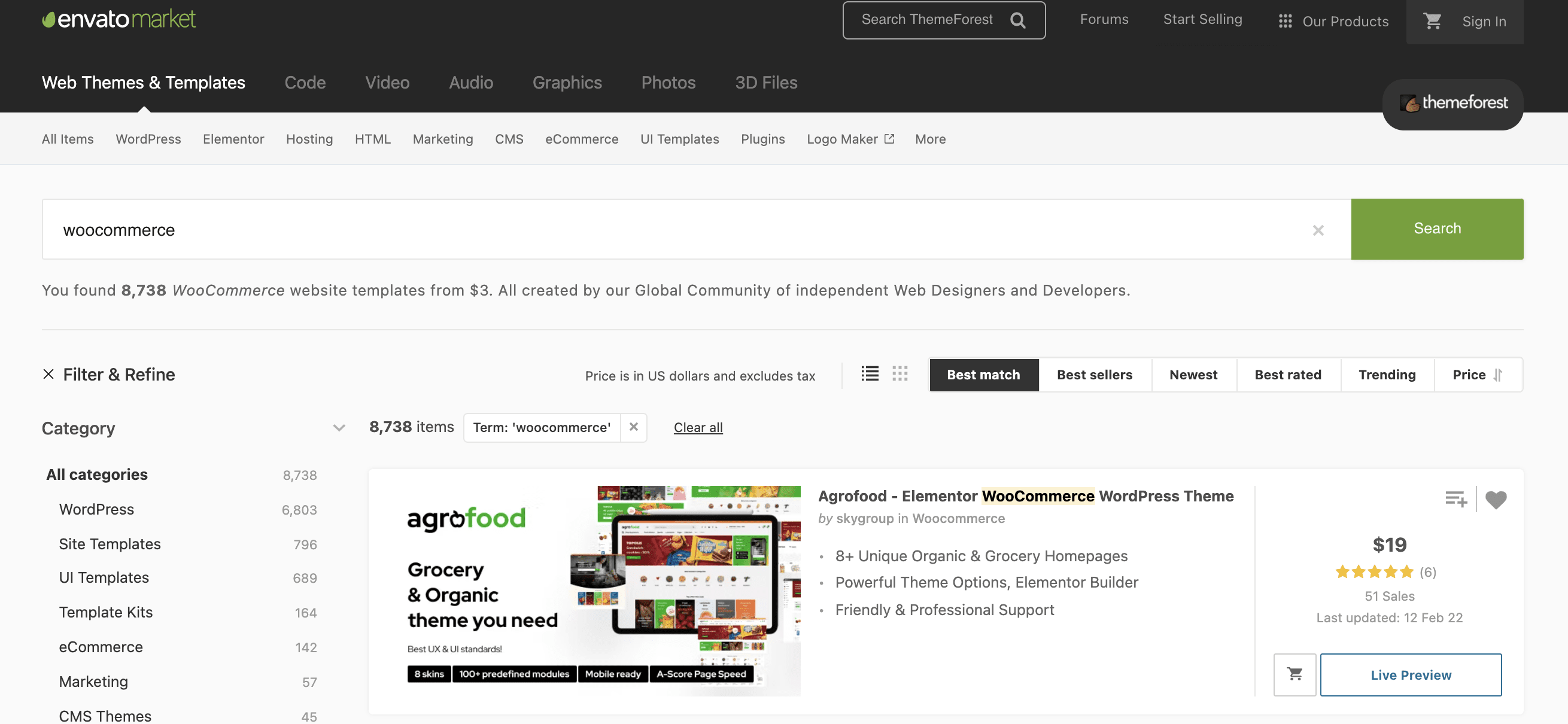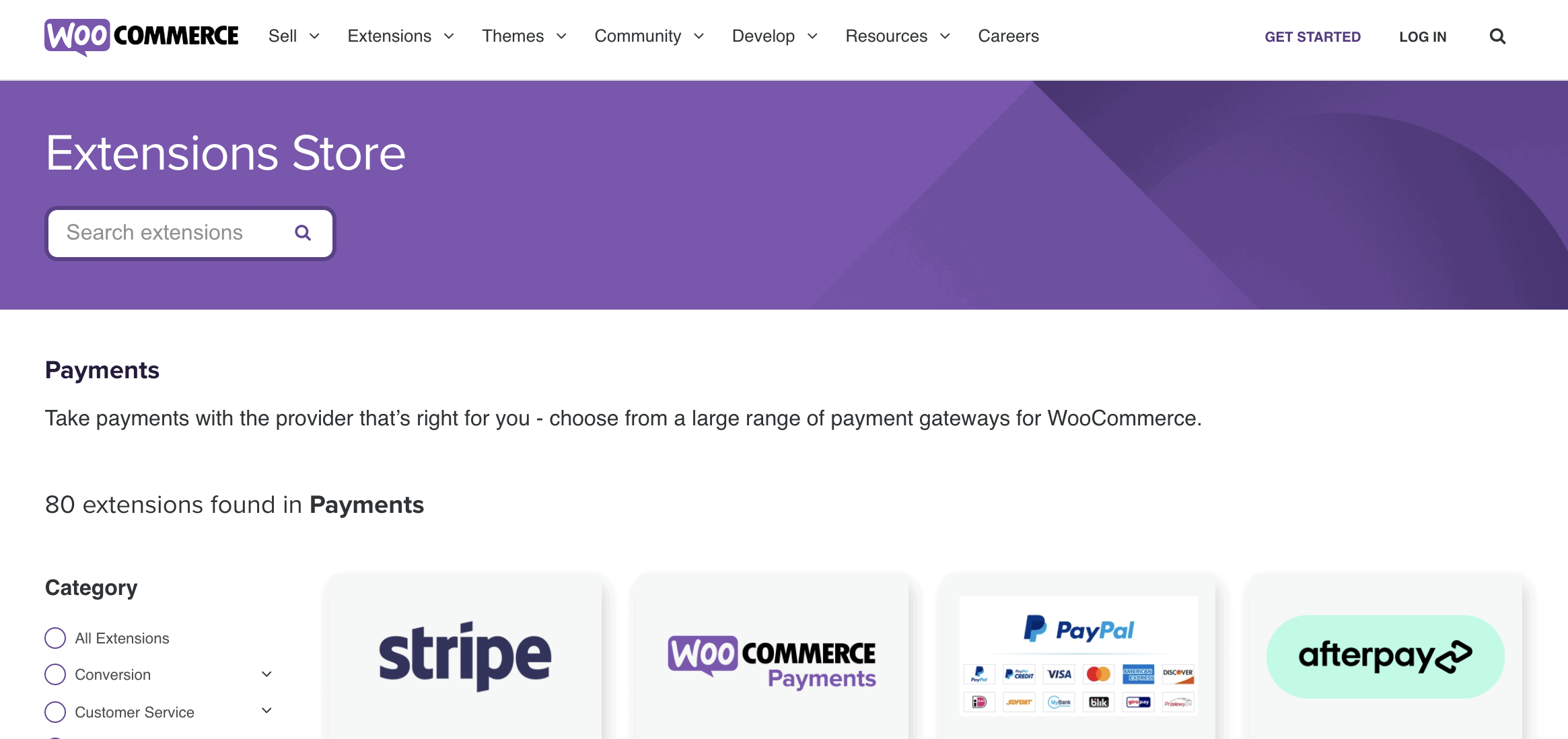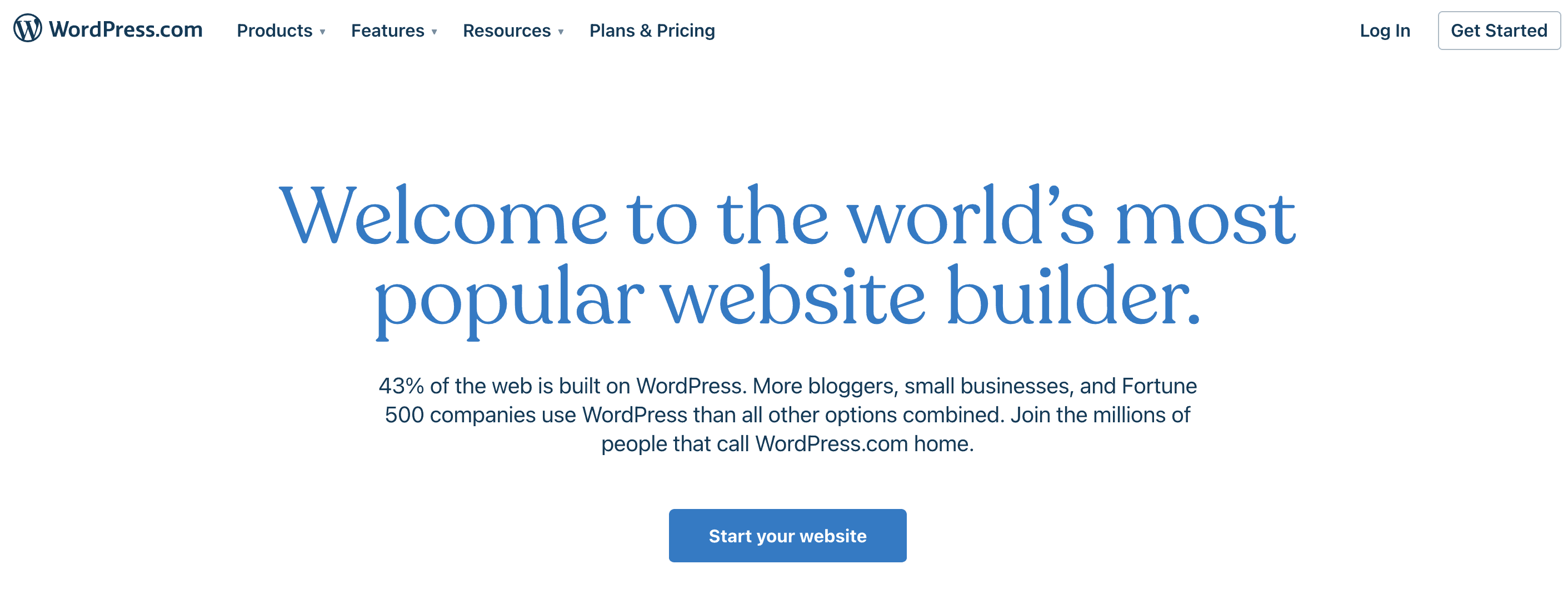[ad_1]
Shopify and WooCommerce are two of the biggest ecommerce platforms. Shopify was built with commerce in mind and offers countless innovative features to help simplify the experience of shopping online for both merchants and customers. WooCommerce is a WordPress plug-in that allows WordPress users to sell any type of product on their website. With tens of thousands of plug-ins you can add to your website, WordPress offers a ton of customization that you can’t find anywhere else. Today, we’re going to break down the differences between Shopify and WooCommerce to help you decide: Shopify vs WooCommerce which is better?
Shopify vs WooCommerce: Which Is Better in 2022?
1. Price
When comparing Shopify vs WooCommerce in terms of price, the answer isn’t directly clear cut. Shopify offers a tiered pricing system starting at $29 a month, though as features get tacked on the price increases. The pro to Shopify’s pricing is that it includes hosting, which can get pretty expensive as your website’s popularity grows when purchased from a third-party. Shopify also offers unlimited products, use of sales channels, and more even on their lowest price plan.
WooCommerce’s pricing model is unique, mostly because there isn’t a cost to use it (or WordPress either). Those looking to save money when running an online store, especially in the early stages might be more inclined to choose WooCommerce as their go-to for price alone. However, building an online store isn’t totally devoid of any costs. You’ll need to pay for your own hosting on WooCommerce, which typically only costs a couple of dollars a month on a shared server and increases as your business grows with it. The risk will be on whether your website has a reliable uptime when running your online store, especially on Black Friday.
So in terms of price, which is better: Shopify vs WooCommerce? WooCommerce wins out if you’re an early stage business or testing out ecommerce. However, more established brands may turn to Shopify for an all-in-one bundle in terms of features and price.
2. Ease of Setup
Shopify and WooCommerce both allow you to set up an online store relatively easily. Their ecommerce website builder allows a non-developer to set up a website without needing technical skills or support. But is one easier than the other? Let’s find out.
When signing up to Shopify, you can follow a step-by-step process of setting up your online store. While most of the process is straightforward, some of the details get missed in early setup. For example, most Shopify stores get set-up with a .myshopify.com domain. However, having your own custom domain name is an important step that many people only do afterwards. You need to separately add your .com domain after setting up your Shopify store.
WooCommerce’s setup is also a bit disjointed. While adding WooCommerce to your WordPress site is pretty straightforward, if you’ve never set up a WordPress site before, you’ll also need to invest and point your hosting, which can take 24 hours. So, there are a few more moving parts, such as setting up WordPress, installing WooCommerce, purchasing hosting, and buying a .com domain, and then of course setting up your website.
When comparing WooCommerce vs Shopify, Shopify wins this round. Keep in mind that you can easily figure both of them out by reading their documentation, blogs, or watching videos to get some extra support in the early stages of building your Shopify or WooCommerce website.

3. Apps vs Plug-ins
When comparing Shopify vs WooCommerce in terms of apps and plug-ins, they both have their own add-ons that you can use to optimize, improve, and increase the features of your online store.
Shopify boasts over 6,000 apps on their App Store, which are all specialized in ecommerce allowing you to add sales channels, better market your website, enhance SEO, and much more. Shopify apps tend to be created by third-party developers who charge monthly subscriptions to use their app on a monthly basis. Unfortunately, this can dramatically increase the cost of running an online store. However, Shopify does have a collection of free apps as well.
WooCommerce also has its own collection of plug-ins, but because it’s hosted on WordPress, you can also tap into all of the plug-ins on WordPress too. WordPress, at the time of writing, has over 59,500 plug-ins you can install on your website. Ultimately, you’ll be able to customize nearly any aspect of your website. Just search for any plug-in to help you solve any problem you have. However, there’s an added benefit too: most of them are free or only require a one time payment. While some are recurring, it’s not as common.
So if you’re deciding on Shopify vs WooCommerce based on customization ability through apps and plug-ins, WooCommerce wins first prize here folks.

4. Theme Design
The look of your website matters. Depending on the type of website you design, you might find yourself browsing through countless themes and templates to find the perfect design for how your website will look. Both Shopify and WooCommerce have their own themes that you can add to your website.
When comparing Shopify vs WooCommerce, it seems that WooCommerce has a much bigger collection of themes to choose from because it’s hosted on WordPress. You can find thousands of themes that allow you to integrate content and commerce on popular sites, such as ThemeForest and WooCommerce Theme Store.
Shopify, on the other hand, has a smaller pool of themes to choose from. You can find some on the Shopify Theme Store. Shopify offers several free themes but the best ones have a fee attached to them. While Shopify allows store owners to blog, there aren’t many themes with good blog designs unlike WooCommerce.
On ThemeForest, you can find over 8,500 WooCommerce themes, whereas Shopify only has 1,400 themes available.
So, when comparing WooCommerce vs Shopify, WooCommerce has a greater collection of themes available to help you find a website design you love and that works for your business.

5. Payment Gateways
A payment gateway is the company that processes payments on your online store. For example, PayPal is an example of a payment gateway. However, around the world there are dozens of brands that offer payment processing services for different regions.
Shopify and WooCommerce both offer over 100 payment gateways, proving themselves to be the leaders in this space when comparing to other reputable ecommerce platforms.
The only difference between them is that Shopify tacks on an additional fee for payment processing. The percentage added depends on the plan you’ve signed up for. However, WooCommerce doesn’t charge any additional fees for payment processing. Therefore, WooCommerce is better in terms of payment gateways when comparing Shopify vs WooCommerce.

6. Website Maintenance
Shopify and WooCommerce both have regular website maintenance. However, their processes for doing so vary slightly.
On Shopify, you will never need to update your website for the latest version. Shopify automatically updates the website with new layouts, features, and bug fixes constantly. Since Shopify has a full-development team at the company, the process of updating the website is seamless for the merchant. You never have to worry about bug fixes because they’re patched without you even knowing. You also don’t have to worry about issues around big days like Black Friday because Shopify does code-freezes during that period. Ultimately, there’s no down time, loading wait times, or anything like that while using Shopify.
WooCommerce and WordPress have store updates as well. However, you need to choose to update to the latest version. The downside to this is that you’re liable if you don’t update your website for bug fixes and so on. The upside is that you decide whether or not to install a version in case you don’t like what the newest version offers. In this case, WooCommerce gives you the freedom of choice.
When comparing Shopify vs WooCommerce in terms of website maintenance, Shopify wins this round for not burdening users to have to install updates but we commend WooCommerce for letting us keep a version we love if we want to.
7. Scaling Your Business
Your business can continue to grow on both WooCommerce and Shopify. WooCommerce has had some huge brands on it’s platform. The only downside to it is that hosting costs will grow as your business grows, whereas you can stay on Shopify’s $29 a month plan even with millions of visitors. There’s tight competition when comparing WooCommerce vs Shopify in terms of scalability because both platforms have hosted some of the biggest names and brands you’ll find online. You can browse some of the most popular Shopify stores.

8. Content Marketing
Both Shopify and WooCommerce allow you to build a blog on their platform. With SEO being one of the biggest sources of website traffic for brands, SEO and content marketing are a crucial part of building a big name brand.
Shopify has several SEO apps in it’s app store allowing you to better optimize your website for search engines. It has a simple content management system that you can create blog content for too. You can easily change slugs, redirect pages, and more in Shopify too.
WooCommerce was built on WordPress so it’s safe to say that WooCommerce’s content marketing and SEO capabilities can stretch farther. WordPress has many of the best SEO plug-ins you can find online and many of them haven’t created apps for Shopify yet. WooCommerce also has many more blog-friendly themes that allow you to build a huge blog alongside an online store so that your blog readers can easily find your store. It also allows you to copy and paste documents from Google Docs without any formatting issues.
Overall, when comparing Shopify vs WooCommerce in relation to content marketing and SEO, WooCommerce is the premier choice for merchants looking to scale through search.

9. Dropshipping and Print-on-Demand
WooCommerce and Shopify have plug-ins and apps that allow you to build dropshipping or print-on-demand stores.
You’ll find dropshipping apps that allow you to sell products from AliExpress on your own website in only a few clicks. However, Shopify allows you to do more than just AliExpress dropshipping. You could also install AliExpress alternative apps to dropship from Etsy, or create a print-on-demand business. You can add several different print-on-demand apps to include hundreds of unique products with custom designs on your website, only paying for each product sold rather than a monthly subscription.
WooCommerce has countless WooCommerce dropshipping plug-ins that allow you to dropship from AliExpress, Etsy, Amazon, and eBay. You can even find single apps that allow you to dropship from different platforms, making it more convenient in a lot of ways. You’ll also find pages of print-on-demand companies like Gooten and many more.
While Shopify has exclusive apps on it’s platform, WooCommerce still has plug-ins that offer the same functionality. Both choices are worthwhile if you plan on building a print-on-demand or dropshipping store.

10. Customer Support
With hundreds of thousands or even millions of customers on their platform, there’s always a way to learn how to maximize sales, fix issues, and receive support while building your online store.
Shopify offers customer support through live chat, email, and phone. Some of their support via email is available in multiple languages. In addition, Shopify has help docs, blog posts, webinars, and even online courses that you can access to educate yourself about ecommerce, marketing, and business in general.
WooCommerce, on the other hand, is a bit more complex when it comes to customer support. If you’re having issues with hosting, you’ll need to contact your hosting provider. If you’re having an issue with a plug-in, you’ll need to reach out to the plug-in creator. Themes purchased through a third-party will require you to get support from the creator. Overall, while it’s still possible to receive support for a WooCommerce theme, you’ll need to reach out to different companies for different components of your website making it more tedious and complicated.
Overall, Shopify’s support is more comprehensive and more convenient to get a hold of, making them the winner of this round.

Conclusion
So, Shopify vs WooCommerce, which is better? If you’re looking for an all-in-one ecommerce solution that allows you to easily set-up your website, get support, and still allows you to scale with ease, Shopify is the best option. If you’re looking for maximum customization, a content and commerce machine, and affordable pricing, WooCommerce is your best bet. Overall, both platforms are used by some of the biggest platforms online, so there’s no bad choice here. Choose the platform that works best for your business’ needs.
[ad_2]
Source link











